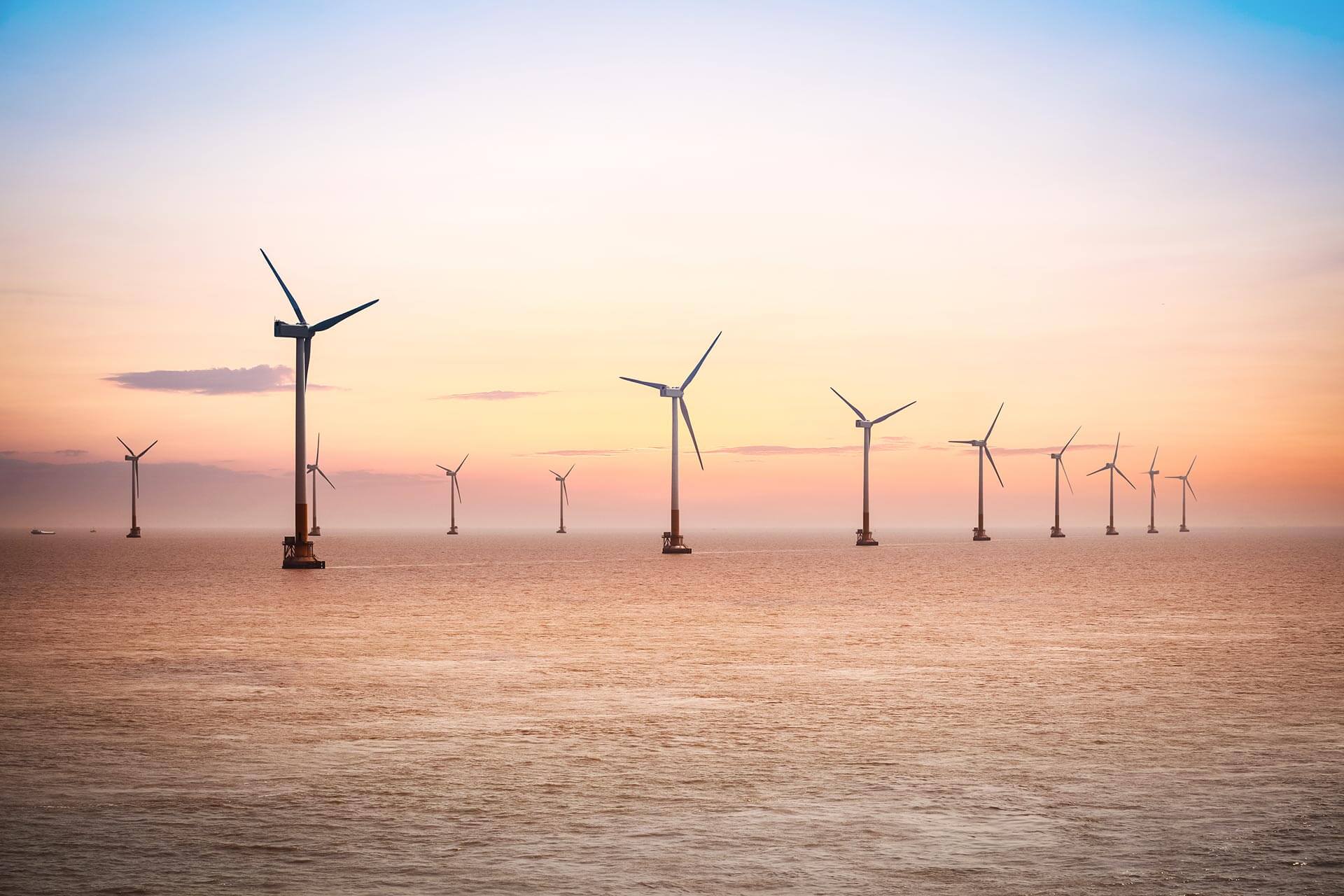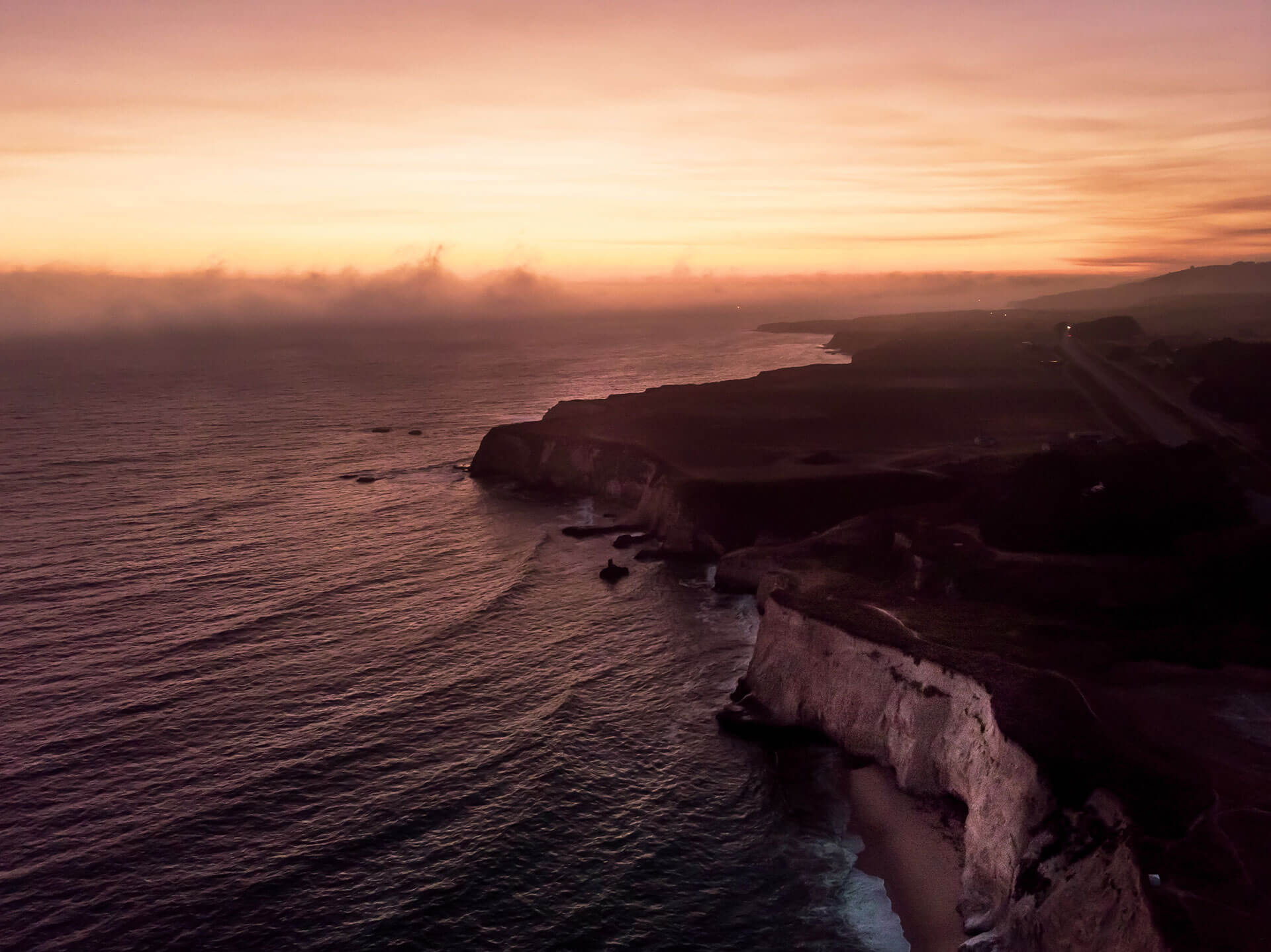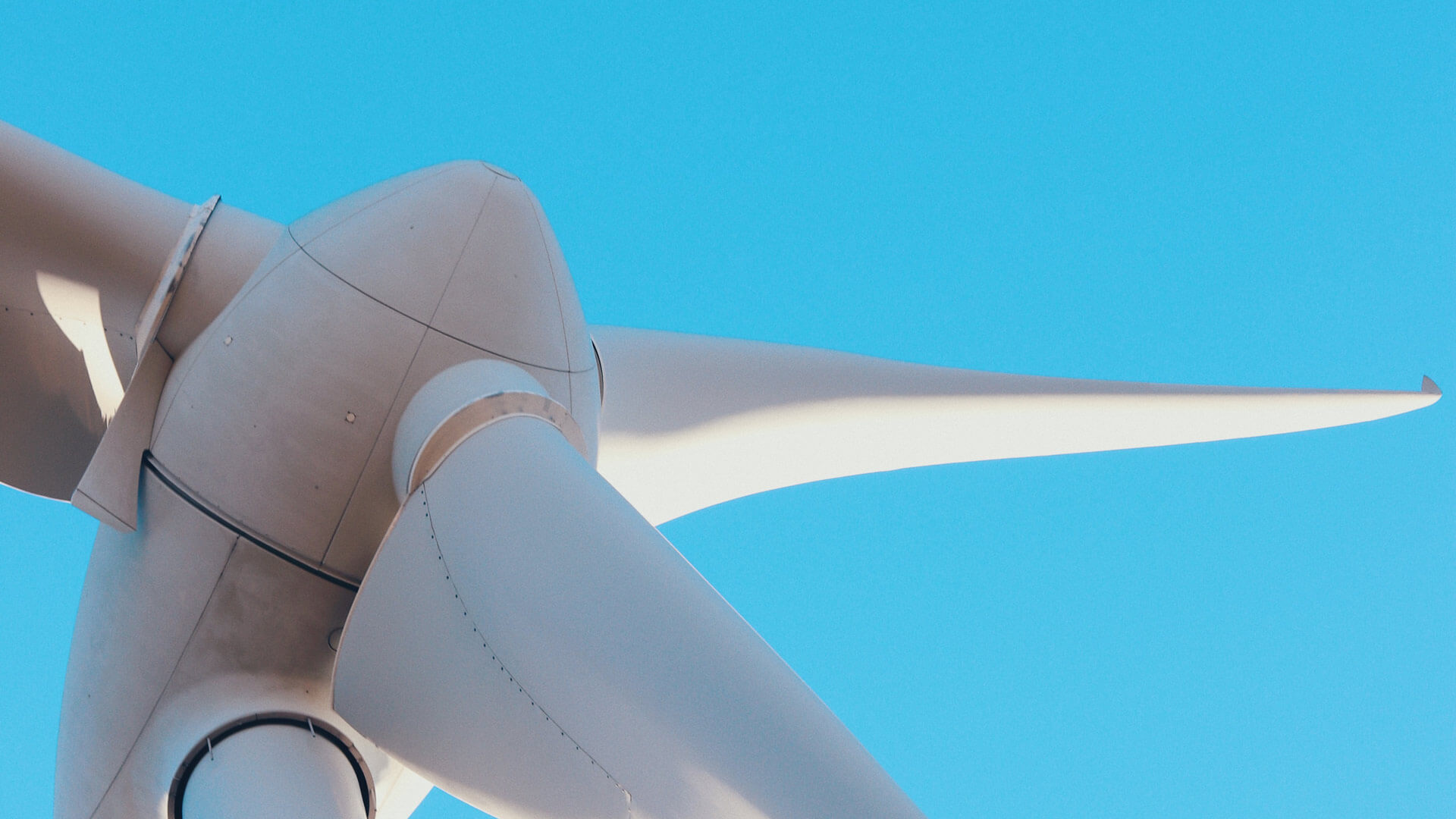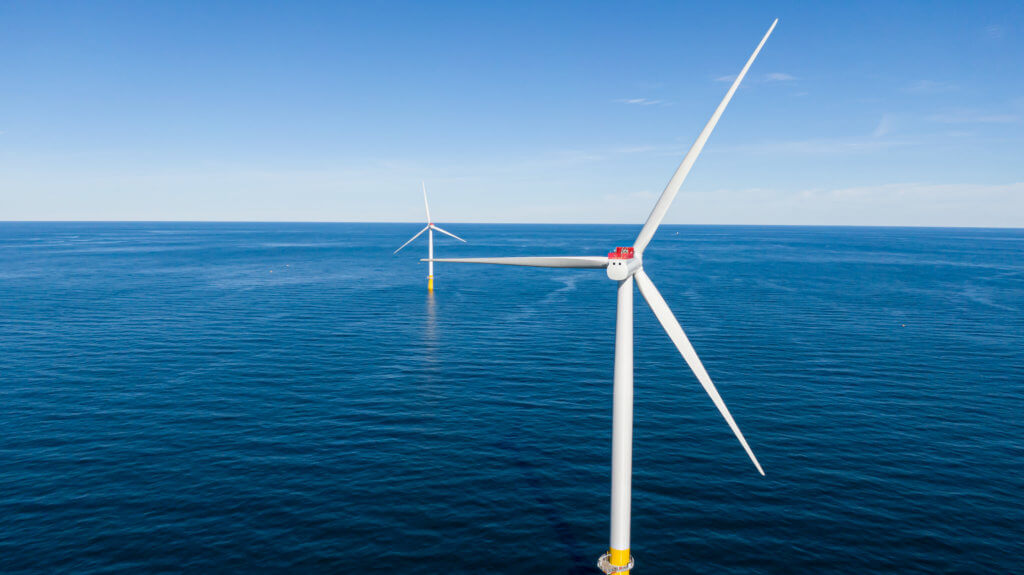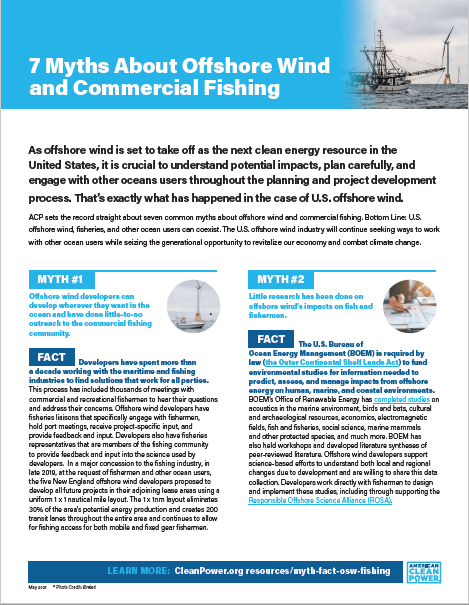Offshore wind power facts
Offshore wind is America’s next major energy source, representing a generational opportunity to create jobs and bolster the economy. It is an abundant clean energy solution for large population centers looking to source more of their power from clean sources, and falling costs make it increasingly economical.
A Majority Renewables Future
This first-of-its-kind study details clean energy’s potential to unlock economic growth and achieve majority renewable electricity generation within the next decade.
74,000
11,000
83,000
How offshore wind power works
How offshore wind power works
Wind energy refers to the process of creating electricity using air flows that occur naturally in the earth’s atmosphere. Just like land-based turbines, modern offshore wind turbines capture kinetic energy from the wind and generate electricity. The first step is wind blowing across turbine blades.
How offshore wind power works
Offshore wind turbines use a variety of drivetrain designs to extract power from the wind: in all varieties of designs, however, generators in a range of configurations create electricity from the rotating power and turning a generator.
How offshore wind power works
DC power from generators is converted to AC electricity and transferred to cables buried throughout the footprint of the wind farm. These centralize the electricity to export cables that deliver the power to be used many miles away.
The Economic Benefits of Offshore Wind
Building America’s offshore wind project pipeline will bring enormous economic benefits to communities across America. Offshore wind will establish a new American supply chain, create tens of thousands of jobs, revitalize port communities, and stimulate investment into local economies across the country. Proposed investments, where a dollar figure is public, include more than $4 billion across manufacturing, ports, vessels, workforce development, and research areas, with many more on the way. Explore our offshore wind proposed investment map to learn more.
All you wanted to know about offshore wind power
Can offshore wind co-exist with commercial fishing and marine species?
Yes. There are limited impacts to marine ecosystems or seafood supply from offshore wind. Although offshore wind lease areas encompass hundreds of square kilometers, wind turbine structures take up only a small portion of that area. With turbine spacing and layouts coordinated with the Bureau of Ocean Energy Management (BOEM) and the U.S. Coast Guard, leasing areas can continue to be used for many of the same purposes for which they were originally used, such as commercial and recreational fishing, recreational boating, and tourism-related trips. BOEM solicits extensive public input when designating offshore wind areas.
Will vessels be able to transit through wind farms?
Yes. Neither BOEM nor the Coast Guard will prohibit vessels, including commercial fishing vessels, from transiting through (or fishing within) lease areas. As a part of the BOEM permitting process, developers have to submit a navigation safety risk assessment (NSRA) as a part of their construction and operations plan (COP), which is then reviewed by the Coast Guard and BOEM to ensure compatibility with safe navigation.
What are some of the benefits of offshore wind to the grid and the environment?
Offshore wind is clean, renewable, reliable, and perfectly located, as approximately 80% of the U.S. population lives within 200 miles of the coast. The U.S. has world-class offshore wind resources.
Are there any offshore wind farms or projects presently in the United States?
Yes. The U.S. currently has one operational offshore wind project with many more on the way. The nation’s first commercial offshore wind project, the Block Island Wind Farm, came online in December 2016. Developed by Deepwater Wind, the Block Island Wind Farm is a 30 MW project with five turbines located in state waters off the coast of Block Island, Rhode Island. The two-turbine, 12 MW Coastal Virginia Offshore Wind (CVOW) pilot project finished construction in June 2020 and commenced commercial operations off the coast of Virginia Beach in January 2021. The CVOW project is the first offshore wind project in federal waters.
The U.S. now has a total offshore wind project pipeline of over 14,000 MW in federal lease areas issued to date. In addition, two offshore wind demonstration projects are planned for development in state waters off Ohio and Maine. Project developers currently expect 12 offshore wind projects totaling 10,300 MW to be operational by 2026.
States are driving strong demand for offshore wind energy and have established targets to procure a total of close to 45,000 MW of offshore wind by 2040. With stable policies in place, the Department of Energy found the U.S. could develop a total of 86 GW of offshore wind projects by 2050.
Where can I find out more information about offshore wind?
Visit supportoffshorewind.org to learn more about how U.S. offshore wind is poised for exponential growth. Explore video testimonials, peruse articles, reports and other resources, and sign up for updates to learn how our offshore wind energy resources will contribute to U.S. economic growth, job creation, and clean, reliable energy for Americans throughout the country.
Visit ACP’s Resources page to download our latest offshore wind fact sheets, reports, and studies. Subscribe to ACP’s Offshore Wind Weekly: an e-brief that delivers timely, relevant news on the offshore wind industry, directly to your inbox every week. Sign up here.
The U.S. Bureau of Ocean Energy Management also features several useful resources about U.S. offshore wind:
- 2016 National Offshore Wind Strategy
- BOEM Offshore Wind Energy
- BOEM Offshore State Activities
- BOEM Offshore Leases Fact Sheet
- BOEM Renewable Energy Fact Sheet
Featured offshore wind resources
Join American Clean Power
Take a seat at the table as we discuss the most important policy decisions facing our industry, exchange information and best practices with other leaders, receive exclusive policy briefings and invitations to attend industry events, and gain access to proprietary industry data and tools that can help grow your business.
Stay informed
Subscribe to American Clean Power and receive the latest renewable energy news, policy updates, and opportunities to get involved.
